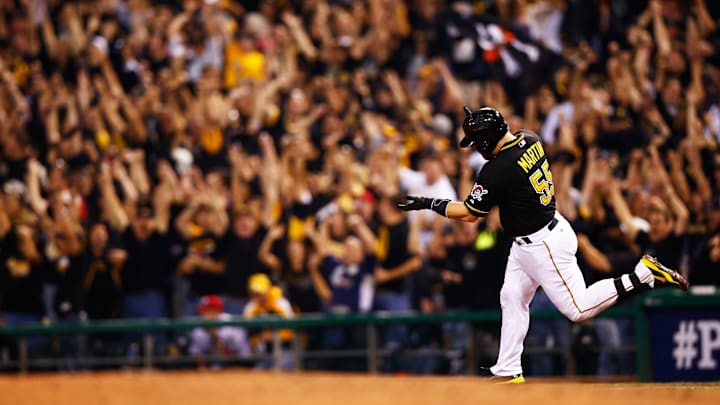In the world of baseball, strange connections often lead to unexpected success stories, and the 2010s saw an amusingly bizarre catcher pipeline between the Pittsburgh Pirates and the New York Yankees develop.
This unlikely partnership produced a series of stalwart backstops who donned the Pirates’ iconic Black and Yellow, culminating in memorable moments that are perhaps overshadowed by the more prominent narratives of the era. Let’s dive into this captivating chapter of baseball history that deserves more than just a passing glance!
The Yankees' and Pirates' shared catcher history of the 2010s
Transforming the Game: Russell Martin’s Impact
After a somewhat lackluster 2012 season with the Yankees that left him with the lowest WAR of his career (1.8), Russell Martin found a new home in Pittsburgh in 2013. The Pirates took a gamble, signing the three-time All-Star to a two-year, $17 million contract, but little did they know they were about to ignite a cultural renaissance within the team. At 30 years old, Martin not only exceeded expectations but also became a transformative force. His first season was nothing short of spectacular: he posted an impressive WAR of 4.1, the highest since his prime at age 24. Martin became a defensive wizard behind the plate while also contributing significantly as a hitter. He was a key player in the Pirates’ unforgettable Wild Card victory over Cincinnati, where he launched two homers, including that iconic shot against Johnny Cueto.
But that was just the beginning. In 2014, he raised the bar even higher, achieving a career-best WAR of 5.7. With a stellar slash line of .290/.402/.430 and a 135 OPS+, Martin established himself as a cornerstone of the lineup, propelling the Pirates back into the postseason spotlight. His performance earned him a place in the NL MVP voting and a lucrative five-year, $82 million deal with the Toronto Blue Jays in 2015, marking his triumphant return to Canada.
Providing Stability: Cervelli & Stewart
As the Pirates faced the daunting task of replacing Martin in 2015, they turned to former Yankee Francisco Cervelli, signing him to a one-year, $3.5 million deal. This decision proved to be a stroke of genius. Cervelli blossomed into a steadfast clubhouse leader and delivered his best performance to date, playing a career-high 130 games and achieving a career-best WAR of 3.4. His impressive .295/.370/.401 slash line, coupled with solid defensive skills, made him an invaluable asset for the Pirates. The prime of Cervelli’s career would come in Pittsburgh, racking up 8.5 WAR across 450 games with a strong .264/.362/.374 slash line. While Cervelli shone brightly, another former Yank would emerge from the shadows.
Acquired in 2013 as a backup for Martin, Chris Stewart may not have dazzled with his stats, but his contributions were vital. Known for his exceptional “pop time,” Stewart brought much-needed stability and depth to the catching position during his tenure from 2014 to 2017. He managed a respectable .250 batting average over 192 games, proving that, sometimes, it’s the quiet consistency that counts.
A Legacy of Reliability
The Pirates’ strategy of tapping into the former Yankee talent pool turned out to be a masterclass in player acquisition. With each catcher they brought on board, the Pirates not only found reliable backstops, but also players who would leave a lasting mark on the franchise. Martin and Cervelli would collectively craft a legacy of excellence, providing fans with unforgettable moments and a sense of pride in the team’s catching history.
This quirky pipeline between the Pirates and Yankees not only reshaped the roster but also highlighted the unpredictable beauty of baseball—a sport where past connections can lead to future triumphs, and where every player has the potential to become a beloved part of the team’s narrative.
